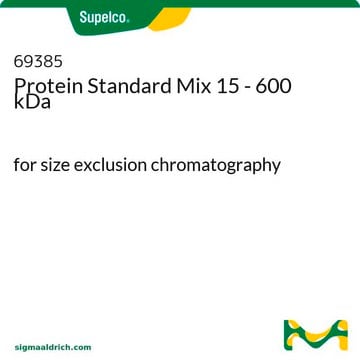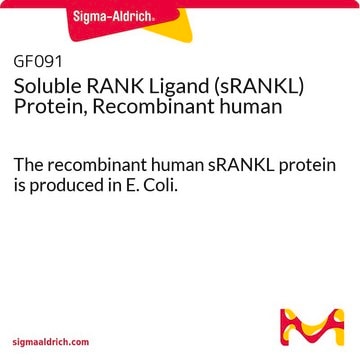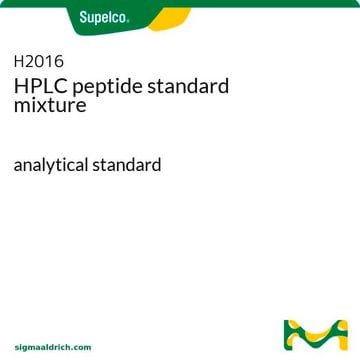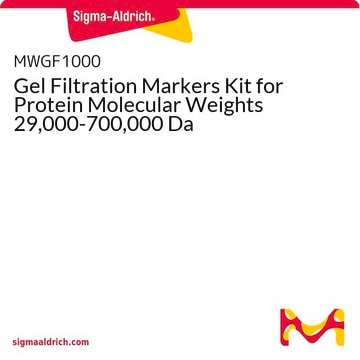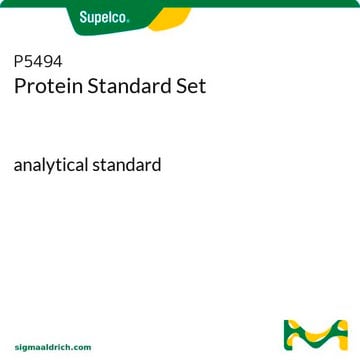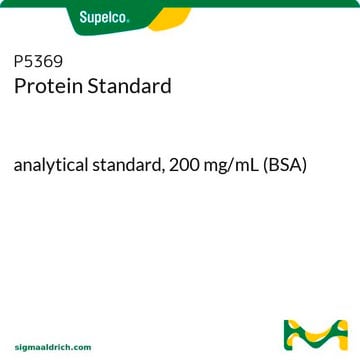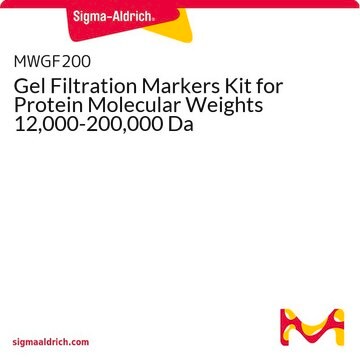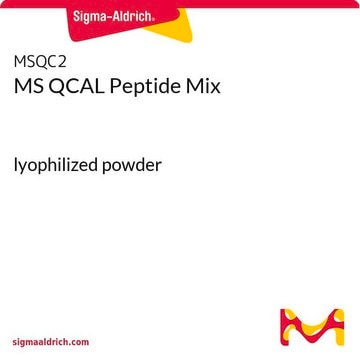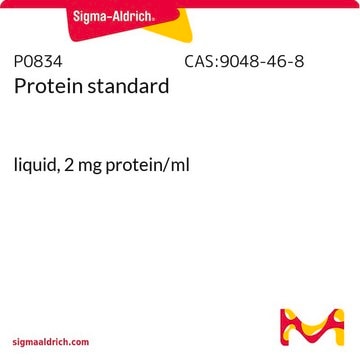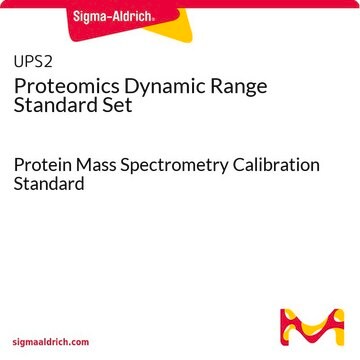Products may be shipped at a different temperature than the recommended long-term storage temperature. If the product quality is sensitive to short-term exposure to conditions other than the recommended long-term storage, it will be shipped on wet or dry-ice. If the product quality is NOT affected by short-term exposure to conditions other than the recommended long-term storage, it will be shipped at ambient temperature. As shipping routes are configured for minimum transit times, shipping at ambient temperature helps control shipping costs for our customers. For more information, please refer to the Storage and Transport Conditions document: https://www.sigmaaldrich.com/deepweb/assets/sigmaaldrich/marketing/global/documents/316/622/storage-transport-conditions-mk.pdf
H2899
HPLC-Protein-Standardmischung
analytical standard
Synonym(e):
Protein Calibration Mix
Größe auswählen
About This Item
Empfohlene Produkte
Qualität
analytical standard
Qualitätsniveau
Form
solid
chemische Klasse(n) des Analyten
amino acids, peptides, proteins
Methode(n)
HPLC: suitable
Anwendung(en)
food and beverages
Format
multi-component solution
Lagertemp.
−20°C
Verwandte Kategorien
Anwendung
Verpackung
Anwendung
Signalwort
Danger
H-Sätze
P-Sätze
Gefahreneinstufungen
Resp. Sens. 1
Lagerklassenschlüssel
11 - Combustible Solids
WGK
WGK 3
Persönliche Schutzausrüstung
Eyeshields, Gloves, type N95 (US)
Hier finden Sie alle aktuellen Versionen:
Analysenzertifikate (COA)
Die passende Version wird nicht angezeigt?
Wenn Sie eine bestimmte Version benötigen, können Sie anhand der Lot- oder Chargennummer nach einem spezifischen Zertifikat suchen.
Besitzen Sie dieses Produkt bereits?
In der Dokumentenbibliothek finden Sie die Dokumentation zu den Produkten, die Sie kürzlich erworben haben.
Kunden haben sich ebenfalls angesehen
-
How is shipping temperature determined? And how is it related to the product storage temperature?
1 answer-
Helpful?
-
-
How can I determine the shelf life / expiration / retest date of this product?
1 answer-
If this product has an expiration or retest date, it will be shown on the Certificate of Analysis (COA, CofA). If there is no retest or expiration date listed on the product's COA, we do not have suitable stability data to determine a shelf life. For these products, the only date on the COA will be the release date; a retest, expiration, or use-by-date will not be displayed.
For all products, we recommend handling per defined conditions as printed in our product literature and website product descriptions. We recommend that products should be routinely inspected by customers to ensure they perform as expected.
For products without retest or expiration dates, our standard warranty of 1 year from the date of shipment is applicable.
For more information, please refer to the Product Dating Information document: https://www.sigmaaldrich.com/deepweb/assets/sigmaaldrich/marketing/global/documents/449/386/product-dating-information-mk.pdfHelpful?
-
-
Could you provide an order of retention times of when each of these components elute off a protein C4 column (H2899 protein mixture)? Thank you.
1 answer-
The exact method is considered proprietary. However, for a C4 column, it should elute ribonuclease A first, followed by cytochrome C, holo-transferrin, and apomyoglobin.
Helpful?
-
-
What is each componant's actual molecular weight (ribonuclease A, cytochrome c, holo-transferrin and apomyoglobin)?
1 answer-
The molecular weight of each component is not reported. See below for the expected values:
Ribonuclease A: approx. 13.7 kDa
Cytochrome C: approx. 12.3 kDa
holo-Transferrin: 72.1 - 78.5 kDa
Myoglobin: approx. 17.6 kDaHelpful?
-
Active Filters
Unser Team von Wissenschaftlern verfügt über Erfahrung in allen Forschungsbereichen einschließlich Life Science, Materialwissenschaften, chemischer Synthese, Chromatographie, Analytik und vielen mehr..
Setzen Sie sich mit dem technischen Dienst in Verbindung.